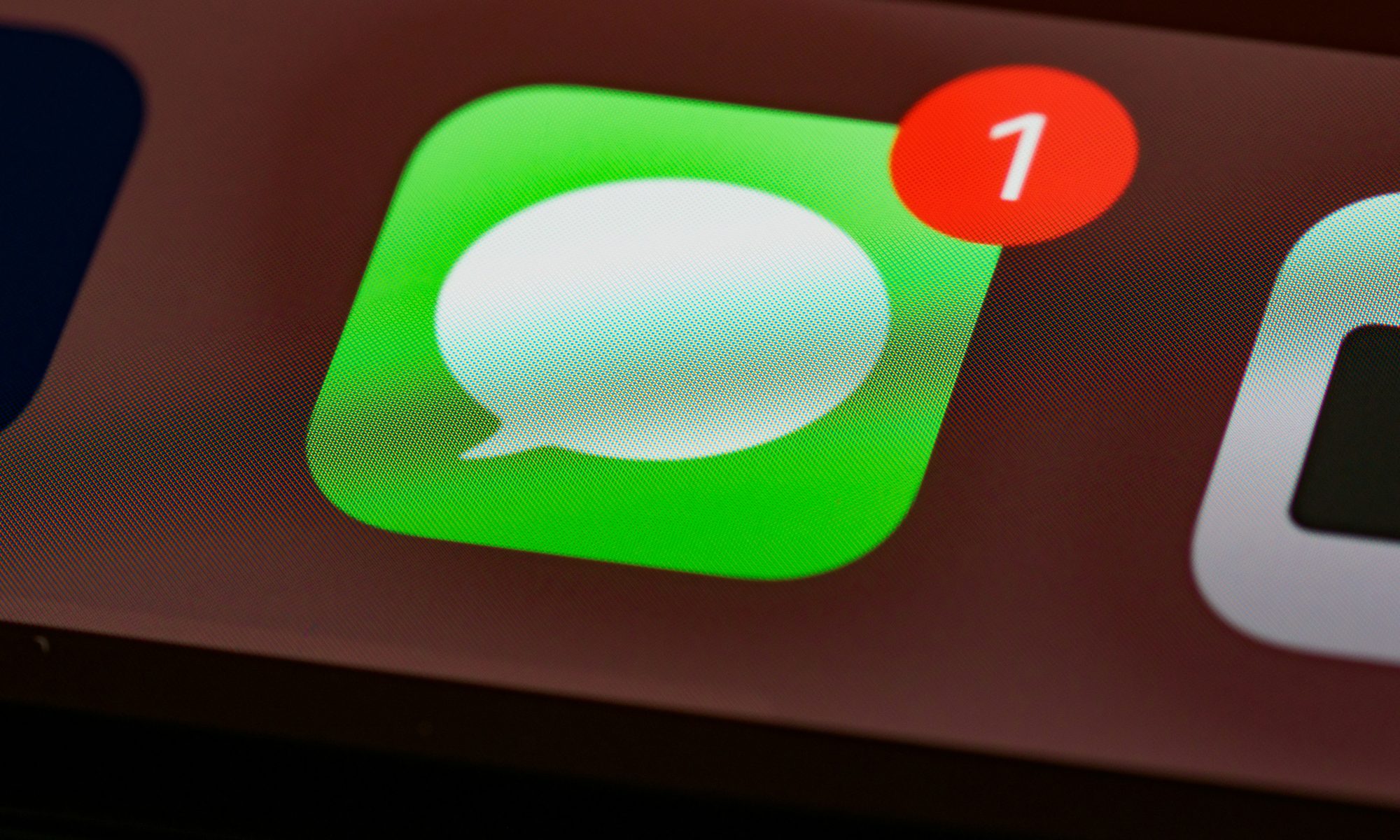──────────────────────────────────────────────
TL;DR
Automated SMS lets businesses send instant, trigger-based text messages to customers. It saves time while improving communication, engagement, and efficiency across marketing, reminders, and updates.
- Sends texts automatically based on actions or schedules
- Boosts engagement with higher open rates
- Personalizes messages for stronger customer connections
- Saves time and ensures consistent communication
──────────────────────────────────────────────
Every second counts when it comes to connecting with your customers. That’s why many businesses turn to automated SMS. It lets you deliver updates, reminders, and promotions instantly without lifting a finger.
From confirming orders to sending appointment alerts, automation keeps your operations running smoothly while still adding a personal touch.
In a world where speed and convenience shape customer expectations, automated SMS helps you stay one step ahead. Here’s how you can maximize its potential and why it’s a true game-changer for your growth.
What is Automated SMS for Businesses?
Automated SMS lets you send pre-written text messages automatically to your customers based on specific triggers or schedules.
Instead of manually sending every update or reminder, you can set up automation tools to deliver texts exactly when they’re needed, like after a customer places an order or sets an appointment.
The main goal of automated text messages is to simplify your communication process while keeping it personal. You can instantly share updates, reminders, or promotions with hundreds or even thousands of customers. This way, you save time and effort.
Here’s how it works: once a condition or trigger is met, such as a completed purchase or upcoming appointment, your system automatically sends the message. This process gives your customers timely and relevant information.
Integrating automation into your messaging strategy also helps you boost engagement, build stronger customer relationships, and keep your operations running smoothly.
A Step-by-Step Guide to Fully Automated Text Messages for Businesses
Automation doesn’t have to feel like rocket science. With the proper setup, you can have your SMS messages working for you around the clock. Here’s how to build your own automated SMS system.
1. Define your goal and audience
Start with a clear purpose. Do you want to boost sales, reduce no-shows, or build stronger customer relationships? Your goal determines the type of messages you’ll send.
Then, segment your audience by age, location, interests, or purchase history. For example, you can send promo codes to loyal shoppers and appointment reminders to clients with upcoming bookings.
2. Choose an SMS service/platform
Working with a trusted SMS marketing provider for businesses like Semaphore lets you send bulk SMS blasts with just a single line of code. This way, you can reach thousands of customers instantly.
Semaphore’s developer-friendly API integrates seamlessly with CRMs or e-commerce tools, enabling trigger-based and scheduled messages. We also offer an easy-to-use web dashboard to manage campaigns and track performance.
Plus, you can send texts using your business name instead of a number. This branding builds trust while keeping communication fast, scalable, and compliant.
3. Build or import your contact list
Upload your existing database or collect new contacts through signup forms, online orders, or social media promotions. Make sure everyone has opted in so that you comply with data privacy laws and send messages to people who genuinely want to hear from you.
4. Write your text messages
Craft short, friendly, and action-oriented texts. Keep each message under 160 characters and include a clear call to action, like “Tap to confirm” or “ Shop now for 20% off.”
To further personalize your automated text messages, you can address the recipient by their first name or mention their recent purchases. You can say something like:
“Hi Alex! Your order #4521 has shipped. Thanks for shopping with us!”
5. Set up triggers and automation workflows
Automation runs on triggers, which are specific actions that send messages instantly. Examples of automated SMS include:
- Welcome messages after signup
- Payment confirmations after a transaction
- Appointment reminders 24 hours before a booking
- Re-engagement texts for inactive customers (“We miss you! Come back for 10% off.”)
Set these up in your SMS dashboard once, and the system will handle them automatically.
6. Schedule broadcasts or drip campaigns
Plan your message timing strategically. For instance, schedule promotional texts during peak engagement hours (10 AM–8 PM) or set up drip campaigns that send follow-up messages over a few days. Example:
- Day 1: “Welcome aboard!”
- Day 3: “Here’s how to make the most of your account.”
- Day 7: “Ready for your next step? Here’s 10% off your next order.”
7. Test before sending
Always test your campaign before going live. Check for typos, broken links, or incorrect trigger setups. Send test messages to your own phone to confirm they display correctly across devices and carriers.
8. Monitor performance and refine
Use your platform’s analytics to track open rates, click-throughs, and conversions. If engagement drops, adjust your message timing, tone, or content. For instance, you might find customers respond better to reminders sent in the afternoon rather than the morning.
9. Ensure legal and regulatory compliance
Follow laws like the Data Privacy Act and TCPA to protect your business and build customer trust. Always obtain consent before sending messages, include a simple opt-out option (like replying “STOP”), and honor unsubscribe requests immediately. Transparency keeps your campaigns both effective and ethical.
11 Best Benefits of Automated SMS for Businesses
Automated SMS helps businesses communicate efficiently, consistently, and at scale. More specifically, it lets you:
1. Save time and resources
When you set up automated workflows, the system sends messages according to a schedule or triggers. This efficiency reduces manual work and allows your staff to focus on strategic and customer-facing activities.
2. Improve customer engagement
SMS automation helps you maintain consistent communication with your customers. Beyond simple alerts, it enables personalized offers, follow-ups, and reminders that build stronger relationships and encourage repeat interaction.
3. Increase message speed and delivery
Most people check their text messages within minutes, making SMS one of the fastest communication channels available. Automated messaging ensures that updates, payment reminders, and service notifications reach customers promptly and reliably.
4. Enhance personalization
Automation tools can use customer data to personalize messages with names, order details, or preferences. This approach helps you create more relevant and meaningful communication.
5. Boost response rates
SMS messages achieve higher open and reply rates than emails or other digital channels. Automated systems send messages at the right time and maintain consistent follow-ups, which helps improve customer response.
6. Ensure consistent communication
Automation maintains a regular flow of messages without manual scheduling. It ensures that no customer receives late texts and that every interaction stays professional and aligned with your brand.
7. Support better customer service
Automated SMS handles repetitive yet critical tasks such as transaction confirmations, appointment reminders, and feedback requests. These timely, consistent updates enhance customer satisfaction, build reliability, and reduce response delays.
8. Enable scalability
Automation lets you handle high message volumes efficiently without expanding your staff. Whether it’s hundreds or thousands of texts, the system maintains accuracy, consistency, and speed. It’s a great option if you’re a growing business with an expanding customer base.
9. Improve tracking and analytics
Modern SMS platforms show delivery rates, engagement levels, and campaign performance. These insights can help you identify trends, measure effectiveness, and refine strategies for better communication outcomes over time.
10. Reduce human error
Manual processes can lead to mistakes like sending incorrect details or missing schedules. Automation removes these risks by ensuring every message follows preset workflows and conditions. It maintains precision and professionalism in all communications.
11. Maintain compliance and security
Trusted SMS gateway providers like Semaphore comply with data privacy and telecom regulations to safeguard customer information. Each message sent meets strict legal and industry standards, ensuring communication remains transparent, secure, and compliant.
Smarter Messaging, Stronger Connections
Automation isn’t the future—it’s the present. With the right tools and strategy, SMS can become one of your most efficient channels for growth and customer loyalty. Start small, measure your results, and watch your business conversations scale like never before.
Ready to transform your customer communication?
Explore Semaphore’s SMS solutions today and take the first step toward smarter, faster engagement.
──────────────────────────────────────────────
FAQ
1. What is automated SMS?
It’s a system that sends text messages automatically based on rules or triggers you set.
2. How does automated SMS help businesses?
It saves time, improves engagement, and gives your customers instant updates or reminders.
3. Can I personalize automated text messages?
Yes. You can address customers by their names or past interactions to make each message feel personal.
4. Is automated SMS legal?
Absolutely, as long as you follow consent and opt-out regulations under the Data Privacy Act or TCPA.
5.How do I get started with automated SMS?
Partner with an SMS gateway provider like Semaphore, import your contacts, and start setting up automated workflows.
6. How often should I send automated messages?
That depends on your goal. Keep it consistent but not overwhelming—quality over quantity.
7. Can automated SMS integrate with other tools?
Yes. Semaphore integrates with CRMs, e-commerce systems, and apps for a seamless workflow.
──────────────────────────────────────────────


